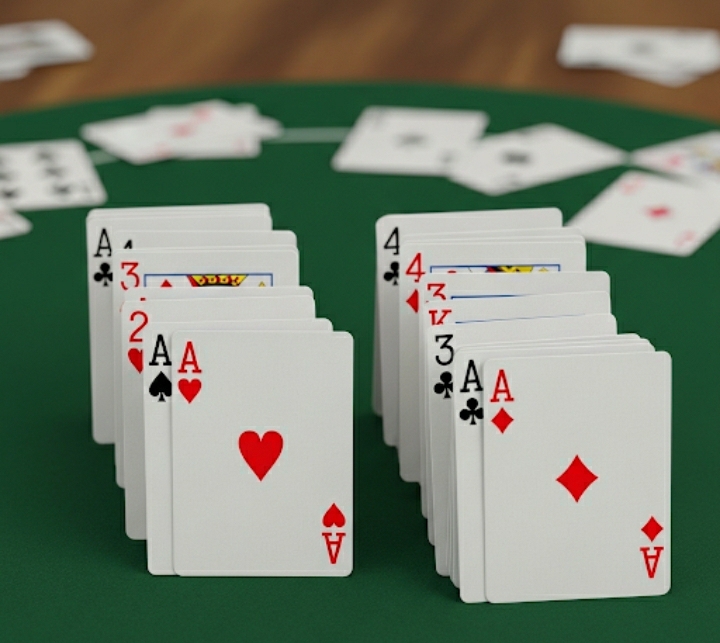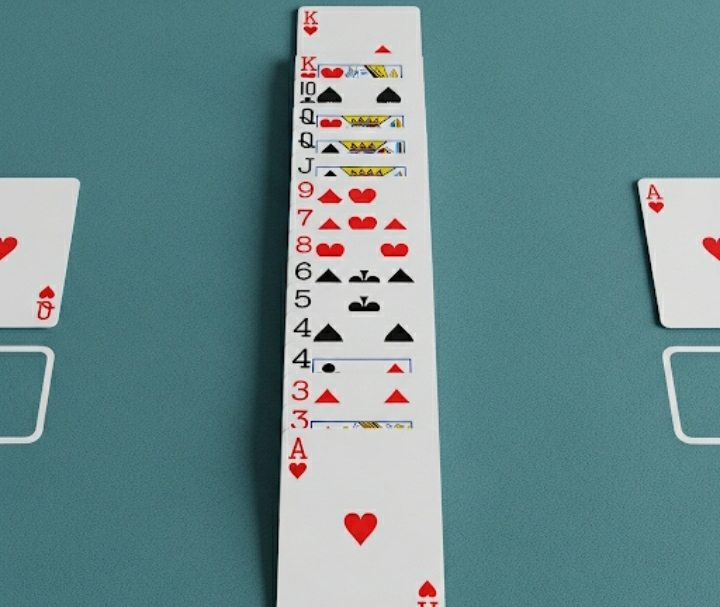Last Tuesday, I watched my grandmother methodically work through a particularly stubborn game of Klondike solitaire at her kitchen table. Card after card, she moved with purpose—never rushing, always thinking two moves ahead. When she finally cleared the board, she looked up and said, “Honey, solitaire isn’t about luck. It’s about seeing what others miss.”
That moment crystallized something I’d suspected for years: the top solitaire tips every player should know aren’t just random tricks—they’re strategic insights that separate casual players from true masters. Whether you’re playing the classic Klondike version on your computer during lunch breaks or challenging yourself with Spider solitaire on your phone, understanding these fundamental strategies can dramatically improve your win rate.
In this comprehensive guide, you’ll discover the essential techniques that experienced players use to consistently beat even the trickiest layouts. From building foundation piles efficiently to managing your tableau like a chess master, these proven strategies will transform how you approach every game.
Essential Foundation Building Strategies
Start with Aces and Twos First
The most crucial mistake new players make? Obsessing over face-down cards while ignoring obvious foundation moves. Smart solitaire players always prioritize building their foundation piles whenever possible.
Think of foundation piles as your escape route—every card you move there is one less obstacle in your tableau. I’ve seen players spend minutes trying to uncover buried cards when they had three aces sitting right there, begging to start foundation sequences.

Here’s the golden rule: If you can move a card to the foundation without blocking a crucial play, do it immediately. This keeps your tableau cleaner and creates more maneuvering room for complex sequences later.
The Power of Empty Columns
Empty tableau columns are pure gold in solitaire—treat them like precious real estate. An empty column can hold any King, which often unlocks entire sequences that seemed impossible moments before.
Consider this scenario: You have a red Queen sitting on a black King, but underneath that sequence lies the exact card you need. Without an empty column, you’re stuck. With one available, you can temporarily move the King-Queen sequence, access your target card, and then rebuild strategically.
Advanced Tableau Management Techniques
The Two-Move Rule
Before making any move, experienced players ask themselves: “What are my next two moves?” This simple habit prevents the frustration of creating deadlocks where no productive moves remain.
Let me share a practical example. You’re deciding between moving a black Jack onto a red Queen or uncovering a face-down card. The two-move rule forces you to consider: What happens after each choice? Will the Jack move open up better options than revealing an unknown card?
Strategic Card Sequencing
Not all sequences are created equal. Building longer sequences in your tableau often provides more flexibility than scattered shorter ones. Why? Longer sequences can be moved as complete units, giving you powerful repositioning options.

Here’s a comparison of strategic approaches:
| Strategy | Benefits | Best Used When |
|---|---|---|
| Long Sequences | Maximum flexibility, easier rearrangement | Multiple empty columns available |
| Mixed Building | Better card access, faster foundation building | Limited space, many face-down cards |
| Foundation Focus | Quick wins, reduced complexity | Clear path to victory visible |
Mastering Different Solitaire Variations
Klondike Solitaire Optimization
Klondike remains the most popular variation, but many players use suboptimal strategies. The key insight? Always consider your waste pile draw count before making moves. In three-card draw, you might want to delay certain foundation moves to cycle through your deck more efficiently.
Smart Klondike players also recognize “dead” positions early. If you’ve cycled through your entire deck without finding productive moves, and no tableau moves are available, that game is mathematically unsolvable.
Spider Solitaire Mastery
Spider solitaire demands a completely different mindset. Here, building complete sequences from King to Ace becomes your primary objective, not just moving cards to foundations.
The critical Spider tip most players miss: Focus on clearing entire columns before worrying about partial sequences. An empty column in Spider provides exponentially more value than in Klondike because it becomes a staging area for complex multi-suit manipulations.
Psychological Aspects of Solitaire Success
Patience Over Speed
I once watched a friend blast through solitaire games at lightning speed, losing repeatedly. Meanwhile, another friend took deliberate pauses, studying each position carefully, and won consistently. The difference? Rushing leads to oversight; patience reveals opportunities.
Successful solitaire players develop what I call “strategic patience”—the ability to slow down when positions become complex, even if simpler moves seem available.
Learning from Losses
Every unwinnable game teaches valuable lessons about recognition patterns. Instead of immediately starting a new game after losing, take thirty seconds to analyze what went wrong. Did you build foundations too quickly? Miss an empty column opportunity? These micro-lessons compound over time.
Technology and Tools for Improvement
Undo Functions: Friend or Foe?
Digital solitaire’s undo function creates an interesting dilemma. While it prevents frustrating misclicks, overusing undo can actually hurt your strategic development. Treat undo as training wheels—use it to experiment with “what if” scenarios, but don’t rely on it as a crutch during normal play.
Statistics Tracking Benefits
Most digital solitaire games track your win percentage and streak statistics. These metrics aren’t just ego boosters—they’re diagnostic tools. A sudden drop in win rate might indicate you’re rushing through games or neglecting proven strategies.
Advanced Tips for Competitive Play
Speed vs. Accuracy Balance
Tournament solitaire exists, and top players master the delicate balance between speed and precision. The fastest player isn’t always the best player—consistency trumps raw speed in competitive environments.
Practice specific scenarios repeatedly: King placement decisions, foundation timing, and tableau reorganization patterns. This builds muscle memory for common positions, naturally increasing your playing speed without sacrificing accuracy.
Pattern Recognition Development
Expert solitaire players develop an almost intuitive sense for promising positions. They recognize “dead end” configurations quickly and identify high-potential layouts at a glance. This skill develops through deliberate practice—actively analyzing position types rather than playing on autopilot.
Conclusion
Mastering solitaire transforms a simple card game into a satisfying exercise in strategic thinking and pattern recognition. These top solitaire tips every player should know provide the foundation for consistent improvement, whether you’re playing casually during coffee breaks or pursuing competitive excellence.
The most important takeaway? Solitaire rewards thoughtful players who balance patience with decisive action. Start implementing these strategies gradually—focus on foundation timing this week, tableau management next week, and pattern recognition the week after.
Ready to test these techniques? Try them in your next five games and track your improvement. Share your results in the comments below, or let us know which tip made the biggest difference in your play style!
Frequently Asked Questions
What’s the actual win rate for solitaire games?
Standard Klondike solitaire has approximately a 79% theoretical solvability rate, but average players typically achieve 15-20% wins. Skilled players using proper strategy can reach 40-45% win rates consistently.
Should I always move cards to the foundation immediately?
Not always. Sometimes keeping low cards in your tableau provides more strategic flexibility, especially when you need specific cards to unlock face-down piles or create empty columns.
How do I know when a solitaire game is unwinnable?
A game becomes unwinnable when no moves are available and you’ve cycled through your entire deck without progress. However, many seemingly “stuck” positions have hidden solutions—always double-check for missed moves before giving up.
What’s the difference between one-card and three-card draw?
One-card draw (also called “easy mode”) allows you to see every card in your deck, making games significantly more winnable. Three-card draw requires more strategic deck management but offers greater challenge and satisfaction.
Is there skill involved in solitaire, or is it just luck?
While card distribution involves luck, skilled players consistently achieve higher win rates through better decision-making, pattern recognition, and strategic planning. The skill ceiling in solitaire is surprisingly high.
Which solitaire variation is best for beginners?
Klondike with one-card draw provides the best learning experience for beginners. It teaches fundamental concepts without overwhelming complexity, while still requiring strategic thinking for consistent success.
Sources: